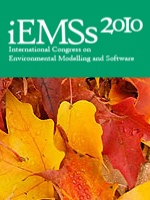Towards a service-oriented e-infrastructure for multidisciplinary environmental research
Abstract
Research e-infrastructures are considered to have generic and thematic parts. The generic part provides high-speed networks, grid (large-scale distributed computing) and database systems (digital repositories and data transfer systems) applicable to all research communities irrespective of discipline. Thematic parts are specific deployments of e-infrastructures to support diverse virtual research communities. The needs of a virtual community of multidisciplinary environmental researchers are yet to be investigated. We envisage and argue for an e-infrastructure that will enable environmental researchers to develop environmental models and software entirely out of existing components through loose coupling of diverse digital resources based on the SOA paradigm. We discuss four specific aspects for consideration for a future e-infrastructure: 1) provision of digital resources (data, models & tools) as web services, 2) dealing with stateless and non-transactional nature of web services using scientific workflows, 3) enabling web service discovery, composition and orchestration through semantic registries, and 4) creating synergy with existing grid infrastructures.
Download full text in pdf format
 Published as:
Published as:
A. Kassahun,
A. Rizzoli,
I. Athanasiadis,
M. Makowski,
H. Scholten,
A. Krause,
A. Beulens,
Towards a service-oriented e-infrastructure for multidisciplinary environmental research,
5th Intl Congress on Environmental Modelling and Software (iEMSs 2010),
2010, International Environmental Modelling and Software Society (iEMSs).
You might also enjoy (View all publications)
- Corn yield estimation under extreme climate stress with knowledge-encoded deep learning
- AirCast: Improving air pollution forecasting through multi-variable data alignment
- A virtual lab maturity model for guiding the co-development of advanced virtual research environments
